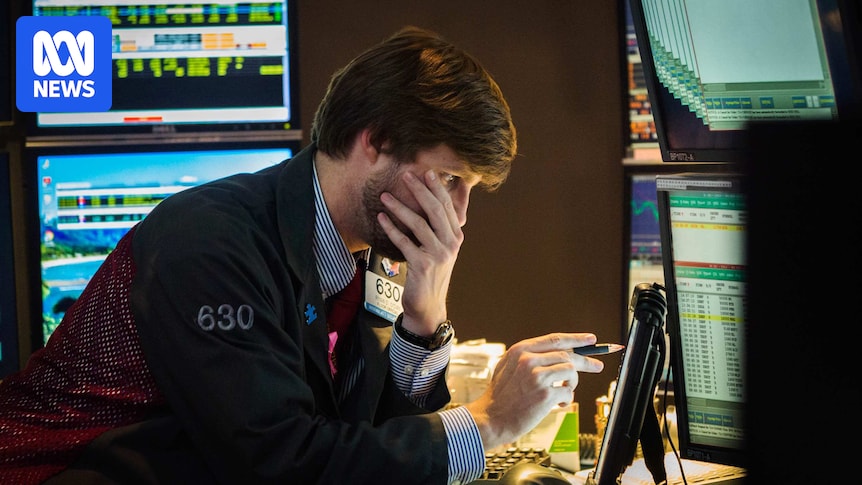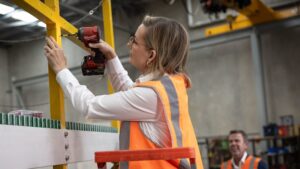
The Australian Securities Exchange (ASX) closed in the red on Friday, with the S&P/ASX 200 index falling 1.6% to 8,417 points. This marks the fourth consecutive week of losses for the Australian market, as global economic uncertainties continue to weigh heavily on investor sentiment. DroneShield, a key player in the defense technology sector, saw its shares drop nearly 12%, contributing significantly to the day’s downturn.
Market Analyst Tony Sycamore noted, “The market’s persistent decline reflects broader global trends, with investors showing caution amid geopolitical tensions and economic policy shifts.” As the trading week concluded, 164 stocks ended in the red, with only 32 gaining and four remaining unchanged. The Consumer Non-Cyclicals sector was the sole bright spot, closing slightly higher by 0.04%.
Global Market Influences
The ASX’s downturn is part of a broader global market sell-off. The S&P 500 and Nasdaq saw declines of 1.6% and 2.4% respectively, while European markets experienced mixed results. The FTSE rose by 0.2%, and the EuroStoxx climbed 0.4%. Meanwhile, commodities such as spot gold and Brent crude oil also experienced declines, with gold down 0.6% and oil dropping 1.1%.
In Asia, Japan’s Nikkei index fell by 2.4% as Prime Minister Sanae Takaichi’s cabinet approved a substantial economic stimulus package aimed at revitalizing the economy. The package, valued at 21.3 trillion yen ($US135.40 billion), is the largest since the COVID-19 pandemic and has raised concerns over Japan’s fiscal stability.
Sector and Company Performance
Within the ASX, the Basic Materials sector was the hardest hit, falling by 4.01%. Academic & Educational Services and Energy sectors followed closely, with declines of 3.6% and 3.2% respectively. Among individual companies, GQG Partners Inc and Catapult Sports Ltd emerged as the top gainers, rising by 5.2% and 4.4% respectively.
Conversely, Lovisa Holdings Ltd suffered the most significant loss, plummeting by 13.8%. Iluka Resources and Iperionx also faced substantial declines of 11.6% and 9.6% respectively. The Australian dollar remained relatively stable, inching up by 0.2% to 64.49 US cents.
Expert Insights and Future Outlook
Shane Oliver, chief economist at AMP, highlighted the differences between current market conditions and the dot-com crash of the early 2000s. “The so-called Magnificent Seven shares have huge profits and strong growth,” Oliver noted, contrasting them with the overvalued internet stocks that led to the NASDAQ’s 75% collapse two decades ago.
Looking ahead, investors are cautiously optimistic about the US market, with S&P 500 futures pointing to a positive start. However, local investors remain hesitant to buy into the Australian market, awaiting clearer signals before making significant moves.
Meanwhile, Japan’s economic stimulus package is expected to influence global markets, as policymakers navigate the challenges of fiscal policy and economic recovery. The package will be funded by increased tax revenue and additional government bond issuance, with parliamentary approval anticipated by the end of the year.
Conclusion and Next Steps
As global markets continue to experience volatility, investors are advised to focus on long-term strategies. Kirby Rappell, executive director of SuperRatings, emphasized the importance of avoiding knee-jerk reactions. “Trying to time into cash and out of cash is very tricky, so focusing on the long term is probably the best thing you can do right now,” he advised.
With the ASX and other global indices facing ongoing challenges, market participants will be closely monitoring economic developments and policy decisions in the coming weeks. The next steps for investors will likely involve a careful assessment of market conditions and strategic positioning for future growth opportunities.







